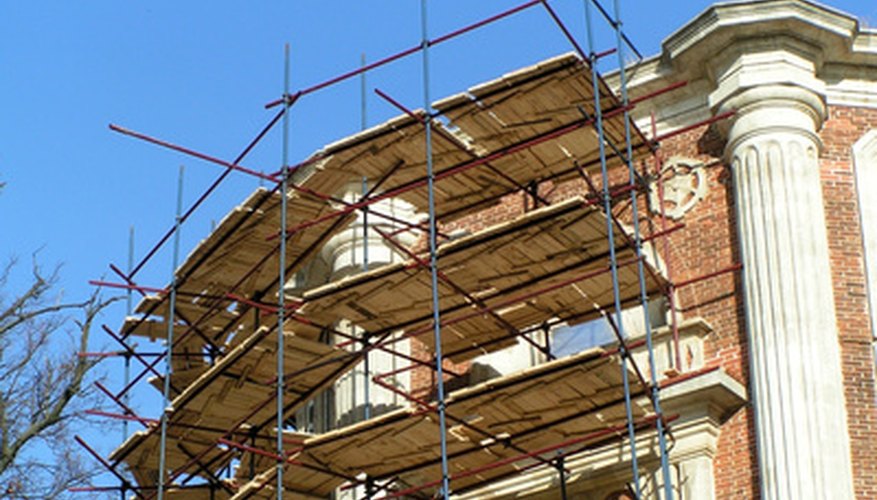Construction workers at building sites routinely perform their work at dizzying heights. When major work is done to the face of a building, scaffolding usually comes into play in order to provide a more stable, temporary work space. However, there are requirements associated with scaffolding that are put in place to ensure the safety of workers.
Proper Scaffolding Specifications
In order to work safely on scaffolding, the scaffolding must first pass basic safety specifications set forth by the Occupational Safety and Health Administration or OSHA. OSHA states that scaffolding frames should be capable of supporting four times the maximum intended load. The scaffolding must also use proper bracing and ties in order to ensure stability. As for scaffolding rail systems, crash barriers are required for scaffolds that are 10 feet high or more. Rail height should be between 36 and 45 inches, while rail strength must be at least 90.7kg. There are also regulations for the scaffolding planks that workers stand and walk on. The space between these planks cannot exceed 1 inch, and all planks must extend 6 inches past the scaffold's end support.
- In order to work safely on scaffolding, the scaffolding must first pass basic safety specifications set forth by the Occupational Safety and Health Administration or OSHA.
- As for scaffolding rail systems, crash barriers are required for scaffolds that are 10 feet high or more.
Proper Use of Scaffolding
Once scaffolding satisfies OSHA requirements, a worker must be able to work on it properly. For climbing, workers should face the rungs, use both hands and avoid carrying materials as they climb, according to Saftek. The safety guidelines for moving scaffolding, also called rolling towers, are much more stringent. Workers should not be on rolling towers while they are being moved, and they should not climb rolling towers until the tower is locked in place. Using a plank to form a bridge between two towers is also prohibited, and under all circumstances, a rolling tower should be used only on a level surface.
- Once scaffolding satisfies OSHA requirements, a worker must be able to work on it properly.
- Using a plank to form a bridge between two towers is also prohibited, and under all circumstances, a rolling tower should be used only on a level surface.
Fall Protection
OSHA has set forth fall protection requirements in order to avert disaster in the rare case that a fall occurs. A proper crash barrier system is the first, preventive measure of fall protection. Another measure is personal fall arrest systems. These systems include a harness and all aspects of the harness such as snap hooks, lifelines and anchorage points. OSHA permits both vertical and horizontal lifelines. No matter what the situation, employers must provide fall protection to all employees on scaffolding that is higher than 10 feet.
- OSHA has set forth fall protection requirements in order to avert disaster in the rare case that a fall occurs.
- A proper crash barrier system is the first, preventive measure of fall protection.
